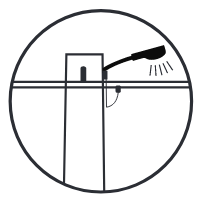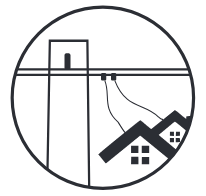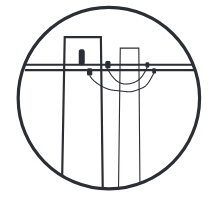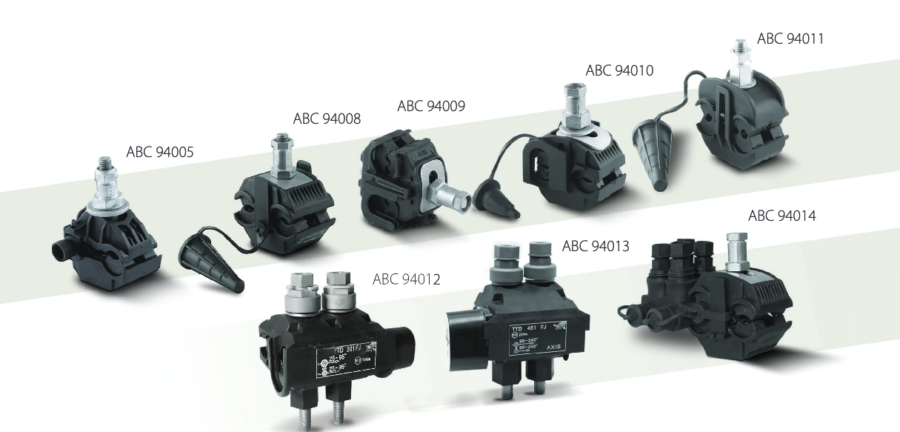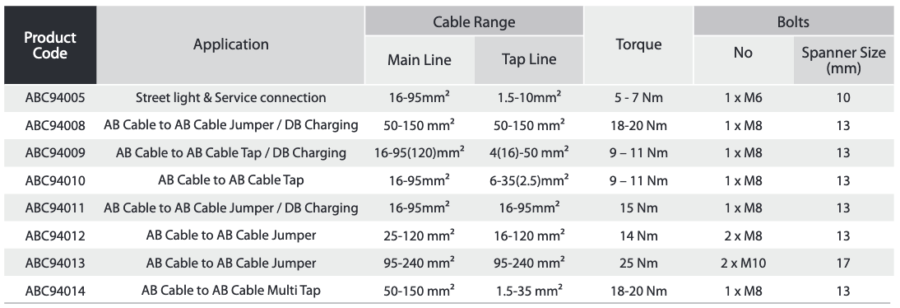The prime objective of the Insulation Piercing Connector (IPC) is to distribute the network. The installation of insulated piercing connectors has been combined with outstanding mechanical, electrical, and environmental properties to create a connector capable of terminating aluminium or copper-stranded wires.
Insulation Piercing Connector is used for all AB cable systems (messenger wire and self-supporting systems) that accept a tap connection. This connection further distributes a line in street lighting and domestic utility connections. The design makes it possible to entirely seal the connection against water penetration, making it a waterproof connector.
These connectors form a semi-permanent metal-to-metal connection between the wire conductor and the insulation piercing connector. Several factors like contact type, connection method and tip design of connectors influence their performance and dependability.
You can view our wide range of Insulation Piercing Connectors here. Feel free to contact us if you want a quotation or have any further questions regarding these Connectors.
Application Guide
There are four main applications to IPCs, namely street lighting, tap off, distribution box charging, and jumper connections.
1. Street Light Connections
In this application, IPCs are generally used to tap the main AB Cable and connect it to a service line that powers streetlights or other applications.
2. Tap off/Multi-Tap Connection to Households
These IPCs are used to tap the main AB Cable and bring power to households. Using the Multiport IPC, a one-tap connection from the mainline can be used to bring connections to multiple households.
3. Distribution Box Charging Connection
These IPCs are used to tap the main AB Cable Line to charge Low Voltage Distribution Boxes which are further connected to different applications such as residential connections, street lights, etc. Axis Low Voltage Distribution Boxes can provide up to 9 outgoing connections for each incoming line.
4. Jumper Connection
These IPCs are generally used with the same size of cable on each side to facilitate T-Connections (90° turns) or any other high-angle turn.
Axis provides the full range of insulation piercing connectors for all the applications listed above. The Axis range of IPCs and their applications are listed below.
Along with using the correct products, it is also important that the products are installed correctly. To watch how to correctly install our range of Insulation Piercing Connectors, please watch our application video here.
Where is Insulation Piercing Connector Used?
Insulation Piercing Connectors (IPCs) are widely used in a variety of applications. One of the main uses of IPCs is in street lights, where they provide a reliable and secure connection between the street light and the electrical supply. They are also commonly used in tap off connections, where they provide a safe and efficient way to branch off from a larger electrical supply. IPCs are also used in distribution boxes for charging purposes and as jumper connections.
In addition to these applications, IPCs are also commonly used to connect Low-Voltage (LV) and High-Voltage (HV) lines with interconnectors. These connectors provide promising insulation and robust strength for the terminal and adjacent ports, making them ideal for use in a range of electrical systems. IPCs are also used to establish connections between twisting LV networks and service cables, which is essential for the proper functioning of many electrical systems.
IPCs are also applicable in a variety of other settings, including Low-voltage insulated household wire T connections, building power distribution system T connections, street lamp distribution systems, and ordinary cable field branches. They are also commonly used in underground power grid cable connections and line connections for lawn flower bed lighting. Overall, the versatility and reliability of IPCs make them a key component in many electrical systems.
Advantages of Insulation Piercing Connectors
Insulation Piercing Connectors (IPCs) are widely used in a variety of applications due to their numerous advantages. One of the key benefits of IPCs is that they are securely fastened to the pole structure, providing a stable and reliable connection. This is especially important in outdoor applications where the connector may be exposed to wind and other weather conditions.
The connection provided by IPCs is also quite dependable, with a low risk of failure or disruption. This is due to their robust construction, which is designed to withstand the rigors of everyday use. IPCs are also known for their durability and long-lasting performance, making them a cost-effective choice for many electrical systems.
Another advantage of IPCs is that they do not require conductor insulation stripping, making them quick and easy to install. Depending on the size of the connector, they can be used for non-tension lines with voltage levels up to 600 Volts. In addition, IPCs do not require post-installation tape, making the installation process even more streamlined.
IPCs are also useful for a variety of conductor combinations, including copper-to-copper, copper-to-aluminium, and aluminium-to-aluminium. This makes them a versatile choice for many different electrical applications. Overall, the numerous advantages of IPCs make them a popular choice for establishing reliable and durable electrical connections
Thank you for reading the blog, Axis is a leading manufacturer and supplier of Electrical Components to over 80+ Countries. Talk to our industry expert by visiting our contact us section. You can also watch our videos by our experts – click here.


